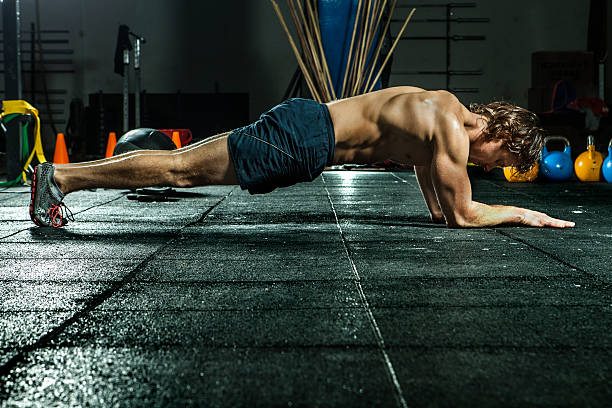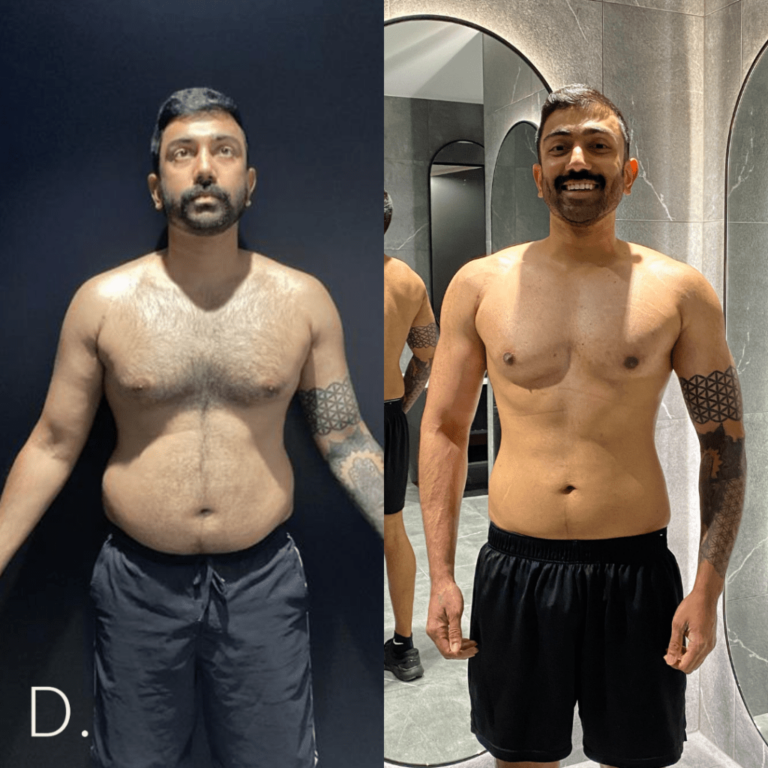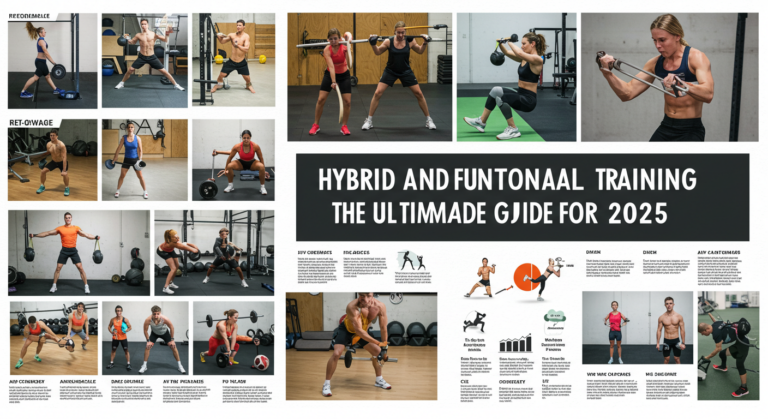The Power of Plank Exercise: A Comprehensive Guide to Health Benefits and Muscle Growth
In the ever-evolving world of fitness, one exercise has stood out for its simplicity, effectiveness, and versatility — the plank . Whether you’re a seasoned athlete or just beginning your fitness journey, planks are an essential addition to any workout routine. This seemingly simple isometric hold engages multiple muscle groups simultaneously, offering a wide array of health benefits and promoting significant muscle growth.
In this article, we’ll explore what plank exercises are, their various types, and how they contribute to overall health, core strength, posture, weight loss, and muscle development. We’ll also discuss tips for proper form, variations for different fitness levels, and how to integrate planks into your daily workout regimen.
What Is a Plank Exercise?
A plank is a bodyweight exercise that involves maintaining a straight-body position while balancing on your forearms and toes (or hands in some variations). It’s an isometric core stability exercise that activates muscles in the abdomen, back, shoulders, glutes, and legs. Unlike traditional abdominal exercises like crunches or sit-ups, planks engage multiple muscle groups at once, making them more efficient and functional.
Planks can be performed in various positions — front plank, side plank, reverse plank — each targeting different areas of the body. They’re often used in yoga, Pilates, and high-intensity interval training (HIIT) routines.
The Science Behind Plank Exercises
Isometric exercises like planks involve contracting muscles without changing their length. This sustained contraction increases muscular endurance, enhances blood flow to the muscles, and improves joint stability. According to research published in the Journal of Physical Therapy Science , isometric exercises can significantly improve core strength and reduce lower back pain over time.
Moreover, because planks don’t require equipment or a large space, they’re ideal for home workouts, gym sessions, or even quick 5-minute routines during a busy day.
Top 10 Health and Fitness Benefits of Plank Exercise
1. Strengthens Core Muscles
The primary benefit of planks is strengthening the core muscles , including the rectus abdominis, transverse abdominis, obliques, and erector spinae. A strong core is crucial for balance, posture, and preventing injuries.
Strong core muscles support the spine and help maintain proper alignment, which reduces strain on other parts of the body.
2. Improves Posture
Poor posture is a common issue caused by weak core muscles and long hours of sitting. Planks activate the deep postural muscles of the spine and pelvis, helping you stand taller and sit straighter.
Regular plank practice trains your body to maintain a neutral spine position, which is key to good posture and reduced risk of musculoskeletal issues.
3. Enhances Flexibility
While planks are primarily known as a strength-building exercise, they also improve flexibility in the posterior chain — especially in the hamstrings, calves, and arches of the feet. Holding a plank stretches these muscles, increasing range of motion over time.
Side planks, in particular, stretch the sides of the body and improve lateral flexibility.
4. Boosts Metabolism and Aids Weight Loss
Planks are part of compound exercises that engage multiple muscle groups simultaneously. This leads to increased energy expenditure both during and after the workout — a phenomenon known as the “afterburn effect” or excess post-exercise oxygen consumption (EPOC).
By building lean muscle mass, planks help increase basal metabolic rate (BMR), enabling the body to burn more calories throughout the day, even at rest.
5. Reduces Back Pain
Weak core muscles are a major contributor to chronic lower back pain. By strengthening the muscles around the spine and improving spinal alignment, planks can alleviate pressure on the lumbar region.
Studies have shown that individuals who incorporate planks into their fitness routine experience significant reductions in back discomfort and improved functionality.
6. Increases Stability and Balance
Planks challenge your body’s ability to stabilize itself, which is crucial for athletic performance and everyday activities. The engagement of stabilizer muscles helps improve coordination and control, enhancing overall balance.
This is particularly beneficial for older adults looking to prevent falls and for athletes aiming to enhance performance.
7. Supports Joint Health
Since planks are low-impact and do not place excessive stress on joints, they are safe for people with knee or hip issues. Properly executed planks strengthen the muscles around the joints, providing better support and reducing the risk of injury.
They also promote better circulation to the joints, aiding in recovery and mobility.
8. Promotes Mental Focus and Discipline
Holding a plank requires mental endurance and focus. As you train your body to maintain the position for longer durations, you also develop mental resilience and discipline — traits that translate well into other aspects of life.
Mindful breathing and concentration during planks can also serve as a form of moving meditation, reducing stress and anxiety.
9. Builds Functional Strength
Functional fitness refers to movements that mimic real-life activities. Planks teach the body to move efficiently and safely through space, improving performance in sports, lifting, bending, twisting, and carrying.
Because planks work the entire body, they prepare you for dynamic movements that require coordination and strength.
10. Encourages Consistency and Accessibility
One of the greatest advantages of planks is that they can be done anywhere, anytime. No equipment, no gym membership — just your body and determination.
This accessibility makes it easier to stay consistent, which is key to achieving long-term fitness goals.
How Planks Contribute to Muscle Growth
Muscle growth, or hypertrophy, occurs when muscle fibers are subjected to tension, leading to micro-tears that repair and grow stronger. While planks are not traditional resistance exercises like weightlifting, they still stimulate muscle growth due to sustained tension and full-body engagement.
Key Muscles Targeted by Planks:
- Rectus Abdominis : Known as the “six-pack” muscle, it runs vertically along the front of the abdomen.
- Transverse Abdominis : The deepest abdominal muscle that acts like a corset, stabilizing the torso.
- Obliques : Located on the sides of the abdomen, they assist in rotational movement and lateral flexion.
- Erector Spinae : These muscles run along the spine and help maintain upright posture.
- Glutes and Hamstrings : Engaged to keep the hips from sagging.
- Shoulders and Chest : Especially in forearm and high plank variations.
Over time, holding planks for extended periods or performing advanced variations can lead to increased muscle tone and definition, particularly in the core and upper body.
Types of Plank Exercises for Every Fitness Level
To keep your plank routine engaging and effective, consider incorporating different types of planks based on your fitness level.
Beginner-Friendly Plank Variations:
- Forearm Plank : Ideal for beginners, focusing on core stability.
- Knee Plank : Performed on knees instead of toes to reduce intensity.
- Wall Plank : Done leaning against a wall, great for those with limited strength.
Intermediate Plank Exercises:
- Side Plank : Targets the obliques and improves lateral stability.
- High Plank : Similar to push-up position; works shoulders and chest.
- Reverse Plank : Strengthens the glutes, hamstrings, and lower back.
Advanced Plank Variations:
- Plank with Leg Lift : Adds unilateral challenge and glute activation.
- Plank Jacks : Combines cardio and strength for fat burning.
- Weighted Plank : Add a weight vest or plate for extra resistance.
- Plank to Push-Up : Transitions between forearm and high plank via push-up position.
Tips for Performing Planks Correctly
Proper form is critical to maximizing the benefits of planks and avoiding injury. Here are some key pointers:
- Keep Your Body in a Straight Line : Avoid letting your hips sag or rise too high.
- Engage Your Core : Pull your belly button toward your spine to activate the transverse abdominis.
- Don’t Hold Your Breath : Breathe steadily throughout the hold.
- Use Proper Hand Placement : In high plank, wrists should be directly under shoulders.
- Start Slow and Progress Gradually : Begin with 20–30 seconds and build up over time.
- Rest Between Sets : Allow 30–60 seconds of rest between sets to recover.
How to Incorporate Planks Into Your Routine
For best results, include planks in your regular workout routine 3–5 times per week. You can perform them as part of a warm-up, cooldown, or as a standalone core session.
Here’s a sample weekly plan:
- Monday : Forearm Plank – 3 sets of 30 seconds
- Wednesday : Side Plank (each side) – 2 sets of 20 seconds
- Friday : High Plank with Shoulder Taps – 3 sets of 1 minute
- Sunday : Reverse Plank – 2 sets of 30 seconds
As you progress, increase duration, add variations, or combine planks with other exercises for a full-body circuit.
Conclusion: Embrace the Plank for Total-Body Wellness
The plank exercise may appear deceptively simple, but its impact on health, fitness, and muscle development is profound. From strengthening your core and improving posture to boosting metabolism and supporting joint health, planks offer a holistic approach to wellness that few other exercises can match.
Whether your goal is to build a stronger physique, reduce back pain, or simply become more resilient in daily life, integrating planks into your fitness routine is a smart and sustainable choice. With consistency, patience, and attention to form, you’ll soon discover why planks are celebrated as one of the most effective bodyweight exercises available today.
So roll out your mat, get into position, and start reaping the powerful rewards of the plank — one steady hold at a time.






